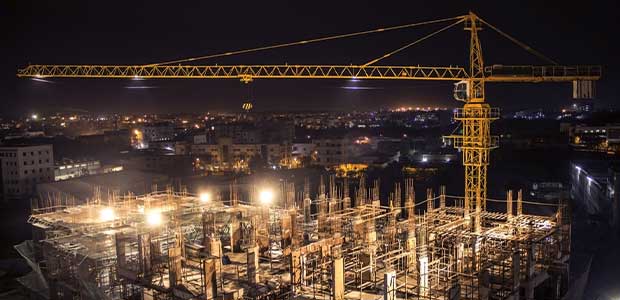
How to Provide Enough Lighting to Construction Sites
- By Jane Marsh
- Jan 04, 2022
As the supply chain bounces back from pandemic-related deficiencies, construction professionals return to work, catching up on delayed projects. COVID-19 increased the industry’s emphasis on safety, improving protective measures on-site. Individuals can use temporary lighting to increase job site safety, minimizing the risk of injuries and fatalities.
The Importance of Efficient Temporary Lighting
Builders have important and dangerous jobs as they develop the essential infrastructure society relies on. Nearly 20 percent of fatalities at work occur on construction sites. The number of injuries increases during nighttime building projects. There are four common causes of injury and death on construction sites. Falling objects are the leading cause of physical harm on-site. Moving materials are also construction hazards that can compromise worker safety.
Poor fall prevention measures increase a builder’s risk of injury at work. Unaware and undertrained machine operators also create construction site hazards, increasing the rate of on-site accidents. Construction professionals can improve workers’ protection by first receiving a site safety inspection. Inspection professionals may assess a job site and identify potential hazards. They can also provide suggestions to improve safety and training during projects. One effective improvement is adding sufficient lighting devices to a construction site.
Types of Lighting for Construction Sites
Before business owners develop a temporary lighting plan, they should evaluate the various types of construction lights. Assessing the different options can help individuals purchase the most effective supplies to support on-site safety. There are four lighting choices available to construction workers.
- Balloon Lights. Builders can utilize balloon lights to access portable, glare-free illumination. The device also reduces shadows, increasing construction professionals’ visibility on-site. Balloon lights provide 360 degrees of lighting, reducing injuries on the job.
The temporary lights also run on electricity, decreasing emissions and improving local air quality. Individuals can set up the devices to stand alone or mount them to equipment. They may also add light-emitting diode (LED) bulbs to the lamp, further improving its illumination capabilities and sustainability. LED bulbs are more energy efficient than incandescent lights, helping construction professionals reduce emissions and save money. They also last about 10 times longer, producing less waste over time. When builders improve the sustainability of a construction site, they decrease one’s risk of inhaling air pollutants and experiencing adverse lung health effects.
- Equipment-Mounted Lights. Equipment-mounted lights also enhance job site visibility, reducing the risk of injury. The device increases illumination from heavy machines. Many pieces of equipment have small headlights that fail to brighten an entire construction path. Construction professionals can also use mounted lights to provide direct streams of illumination throughout a job site. They may attach the devices to stationary devices, enhancing ground-level brightness.
- Portable Light Towers. Individuals may also utilize portable light towers to illuminate construction sites. Multiple lamps make up the tower, attaching to a single mast. Conventional generators power the light source, running on gas or diesel. Some manufacturers also make battery-powered versions. Builders can access these alternative models to decrease noise pollution and improve local air quality.
- Warning Lights and Temporary Roadway Lighting. Another way to improve on-site safety is setting up warning and roadway lights. Flashing bulbs can alert oncoming traffic of construction sites, reducing collisions. Builders may also add warning lights to heavy machines to increase workers’ awareness of moving devices. Adding temporary light poles on roads with construction projects can additionally enhance illumination.
Planning On-Site Lighting Arrangements
Before construction professionals set up their lighting system, they should develop a strategic plan to improve efficiency and minimize interference. During the planning phase, builders may consider a system’s effects on surrounding wildlife. They can also prevent illumination interference by shifting shadow-producing materials on the site. Workers may also decrease job site injuries by utilizing other visibility-enhancement methods. They may wear reflective garments and headlamps, helping other workers see them. Builders can also wear anti-glare glasses, protecting their eyes and improving visibility.
About the Author
Jane Marsh is the Editor-in-Chief of Environment.co.